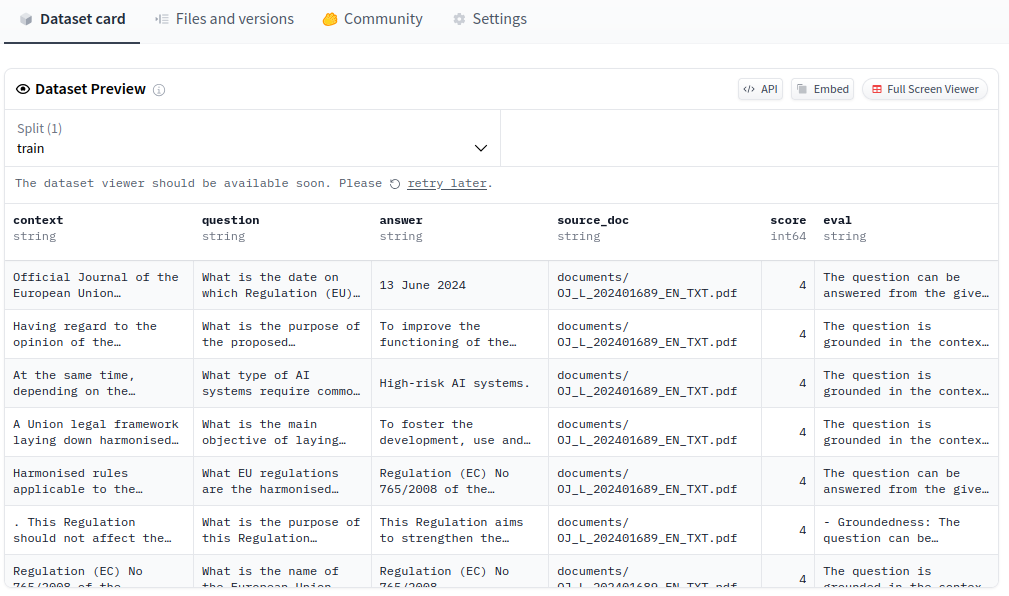Automatically Create Domain-Specific Datasets in Any Language Using LLMs
Have you ever wondered how you can harness the power of Language Models (LLMs) to create datasets tailored to specific domains—regardless of the language? If so, you’re in for a treat! In this article, we’ll explore how to build a Retrieval-Augmented Generation (RAG) dataset filled with contexts, questions, and answers from documents in any language, making your AI applications smarter and more efficient.
What’s the Buzz About RAG?
Retrieval-Augmented Generation, or RAG for short, is an impressive technique that allows LLMs to tap into external knowledge bases. Essentially, it combines the learning power of LLMs with the vast reservoirs of information stored in databases—like a super-powered research assistant! Think of it as a detective with a library at hand, ready to dig up the most relevant facts.
The Process: How Does It Work?
Creating your RAG dataset boils down to a few straightforward steps:
- Upload PDF Files: Start by gathering your documents, whether they’re research papers, articles, or manuals, and upload them into a storage system.
- Vector Database: These documents are then chunked into manageable pieces, and an encoder model transforms them into a vector database, which makes retrieving information faster and easier.
- Vector Similarity Search: When a question is posed, the same encoder model translates that question into a vector to find the top-k relevant text chunks from the database.
- Combining Information: Finally, this retrieved information is fed into the LLM’s prompt for generating a precise response, enhancing the model’s accuracy and reducing the likelihood of hallucinations—those pesky made-up facts!
The basic RAG pipeline. Image by the author from the article “How to Build a Local Open-Source LLM Chatbot With RAG.”
The Need for Validation
As exciting as it might be to deploy our RAG systems, critical evaluations need to happen. There are countless parameters to fine-tune in a RAG pipeline, and researchers are always suggesting fresh improvements. How do you know what works best for your unique scenario?
This is why validation datasets are vital—they help assess RAG performance using relevant data from your area of interest. Crafting a tailored dataset allows you to fine-tune settings for optimal performance.
Real-Life Example: A Document Assistant
Imagine you work in a local government office, managing a plethora of documents in various languages about community services. Using RAG, you could create a custom dataset from those documents, enabling an LLM to assist residents with tailored responses about available services. Whether answering in English, Spanish, or another language, your LLM could provide accurate information while constantly honing its knowledge base.
Conclusion
The ability to automatically generate domain-specific datasets is a game-changing advancement for anyone interested in artificial intelligence. RAG not only streamlines the information retrieval process but significantly enhances the quality of responses provided by LLMs.
The AI Buzz Hub team is excited to see where these breakthroughs take us. Want to stay in the loop on all things AI? Subscribe to our newsletter or share this article with your fellow enthusiasts!




